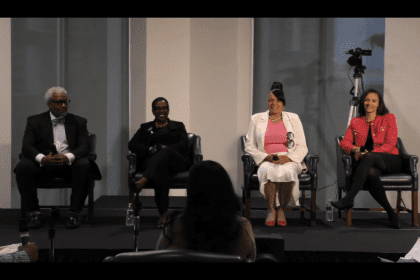New research reveals persistent disparities across all cancer subtypes

The stark reality of breast cancer disparities
Breast cancer, one of the most common cancers among women, continues to pose a significant health challenge worldwide. Yet, despite similar rates of diagnosis, Black women face a startlingly higher mortality rate compared to white women. This disparity is as high as 40%, regardless of the breast cancer subtype. While advances in treatment have improved survival rates over the years, systemic issues in healthcare and societal barriers remain a major contributing factor to these unequal outcomes.
Understanding the research
A recent analysis published in the Journal of Clinical Oncology sheds light on these disparities. The study examined data from 18 different studies, including more than 200,000 breast cancer patients. The data revealed that the increased mortality rate among Black women holds true across various types of breast cancer, challenging the notion that the differences are simply due to tumor biology. This comprehensive analysis suggests that the issue lies in the accessibility and quality of care, among other social factors.
Breaking down breast cancer types
When exploring breast cancer, it’s essential to understand how different subtypes affect the survival rate and treatment challenges:
Triple-negative breast cancer
This aggressive form of breast cancer lacks three common receptors known to fuel cancer growth—estrogen, progesterone, and the HER2/neu gene. It is known for being particularly aggressive and has limited treatment options. This subtype is more frequently diagnosed in Black women and contributes significantly to the higher mortality rate seen in this demographic.
Hormone receptor-positive tumors
These tumors have receptors for estrogen or progesterone, making them more responsive to certain types of hormone therapy. Though they generally have a better prognosis and are treatable, the survival gap persists, indicating that factors beyond biology are at play in patient outcomes.
HER2-positive tumors
HER2-positive breast cancer is marked by rapid tumor growth and potential spread. While targeted therapies have improved treatment outcomes, disparities in treatment access and affordability mean not all women receive the care they need. These differences in accessibility contribute to lower survival rates in communities with fewer resources.
The impact of systemic barriers
The discrepancy in breast cancer survival rates isn’t just a medical issue; it’s deeply rooted in social, economic, and historical factors. Here’s how these barriers come into play:
Healthcare access challenges
One of the most significant factors contributing to the disparity is access to quality care. Black women are more likely to have limited insurance coverage or to be uninsured altogether, making it difficult to afford the specialized treatments that are vital for successful outcomes. Additionally, logistical barriers such as transportation issues and the need for childcare during appointments further limit access to care.
Socioeconomic factors
Income levels have a direct impact on healthcare access. Black women are disproportionately affected by financial challenges, resulting in delays for early detection and treatment. Limited access to preventive care and support services means that breast cancer is often diagnosed at a more advanced stage, decreasing the likelihood of a positive outcome.
Historical context
Trust in the healthcare system is another critical factor. Due to historical injustices like the Tuskegee Syphilis Study and ongoing disparities in care, Black communities are more likely to distrust the medical establishment. This mistrust can deter participation in clinical trials or make patients hesitant to seek timely medical intervention.
Addressing the crisis
Solutions to bridge this gap require a comprehensive, multi-layered approach that involves various stakeholders, from healthcare providers to policymakers.
Healthcare system changes
Improving access to quality care starts with policy changes. Expanding insurance coverage can ensure that more women receive the care they need without facing financial strain. Mobile screening programs, patient navigation services, and better coordination of care can also make a tangible difference in reaching under-resourced communities.
Research initiatives
It’s crucial that clinical trials include a diverse pool of participants to better understand how treatments may impact different populations. Additionally, research focusing on social determinants of health can help inform strategies to reduce disparities. Studying the environmental factors that contribute to higher risks in specific communities can guide public health interventions.
Provider education
Training healthcare providers to recognize and combat implicit biases is essential. Cultural competency training and strategies for effective communication can help improve the provider-patient relationship and ensure that Black women feel heard and understood.
Moving forward: Solutions and recommendations
Tackling this issue requires systemic changes that prioritize equitable healthcare access and support systems. Here’s what needs to be done:
Healthcare access
Efforts should be made to expand insurance coverage and create mobile screening programs that reach communities with fewer resources. Patient navigation services can provide support throughout the diagnosis and treatment journey, ensuring women don’t feel lost in the process.
Research and development
We need to see more diverse clinical trial recruitment to ensure that treatment protocols are effective across racial and ethnic lines. Community-based research programs that engage directly with Black communities can lead to more personalized and effective strategies. Long-term tracking of outcomes is also necessary to measure progress and adapt strategies as needed.
Support systems
Support should extend beyond medical care. Transportation assistance, childcare services during treatment, and patient advocacy programs can help Black women navigate their cancer journey more easily. Creating strong community networks can provide emotional support and reduce feelings of isolation.
The stark disparities in breast cancer survival rates among Black and white women highlight the need for immediate action. While advances in medical treatment continue, addressing the systemic and social factors is key to improving outcomes for all women. It’s time to turn awareness into action and ensure that every woman, regardless of race or economic status, has a fair chance at survival.













